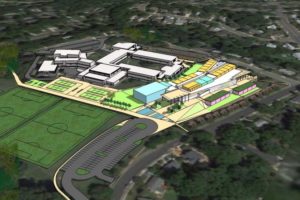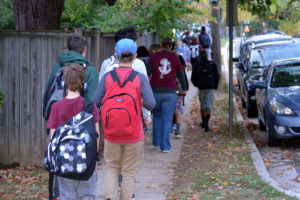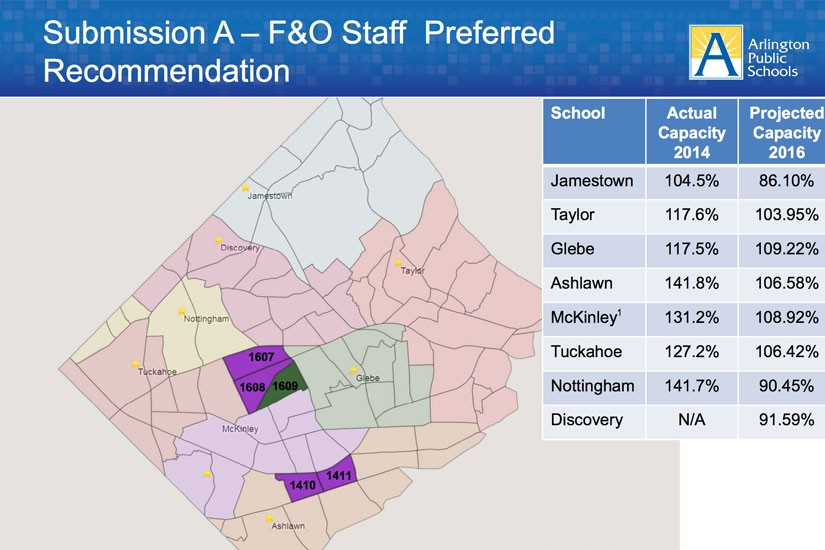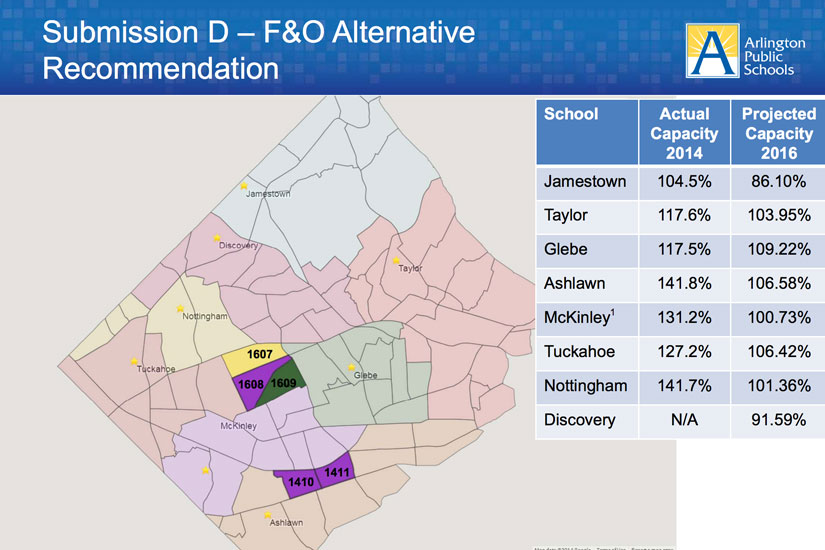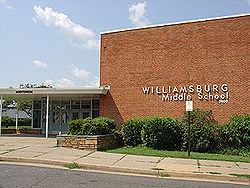 Update at 5:50 p.m. — The County Board’s action on the Williamsburg Field Site Evaluation Work Group Charge has now been deferred until July, according to an Arlington Dept. of Parks and Recreation spokeswoman.
Update at 5:50 p.m. — The County Board’s action on the Williamsburg Field Site Evaluation Work Group Charge has now been deferred until July, according to an Arlington Dept. of Parks and Recreation spokeswoman.
The debate over lighting the fields at Williamsburg Middle School is making a comeback.
At its meeting tomorrow (Tuesday) in July, the County Board will charge a working group with leading a community process to evaluate whether or not to light the Williamsburg synthetic fields.
The issue first emerged in 2013 as neighbors battled soccer parents over whether Williamsburg’s fields should be lighted. The County Board ultimately deferred the lighting decision until 2015.
After the County Board decides on the working group’s exact tasks at tomorrow’s meeting, members will be appointed to the group next month. It is expected to make a recommendation to the Board in May 2016. The Board will then deliberate in June 2016.
Two synthetic fields are currently under construction as part of the Discovery Elementary School project, located on the Williamsburg campus, and are scheduled for completion at the end of the summer.
Arlington Public Schools split the cost of the fields with the County, according to Parks and Recreation spokeswoman Susan Kalish. Kalish said that APS paid for the cost of installing natural grass fields, and the County then funded the difference.
In an APS question and answer session about the construction project held in the fall of 2012, the County stated that if it funded an artificial field, “it would expect that the field be lighted in order to maximize their investment in the field.”
While Kalish confirmed that this is typically the County’s policy regarding turf fields, in this case the Rock Spring community pushed back.
“That’s why we’re having this work group,” said Kalish.
Fifteen community members representing diverse interests will comprise the work group, including one representative from the Arlington Soccer Association and one from the Rock Spring Civic Association. The ASA and the RSCA disagreed vehemently on the construction and lighting of the field when the plan was first proposed in 2013, eventually launching dueling petitions.
President of the RSCA Carl Cunningham said that while he could not speak for all residents, most who live near the Williamsburg fields do not support the addition of lights because of concerns about potential light spillage into their homes.
Cunningham added that residents were concerned about evening noise and traffic from extended hours of play on the field, which might “fundamentally alter the basic character and their peaceful enjoyment of what has been a small, secluded and quiet neighborhood in the evenings.”
The ASA, on the other hand, stressed the need for a lit synthetic field.
“We have more children playing sports in Arlington every year, and the rate of field construction or redevelopment is not close to keeping pace, thus we have to squeeze what we can out of existing play spaces,” said ASA Executive Director Justin Wilt.


